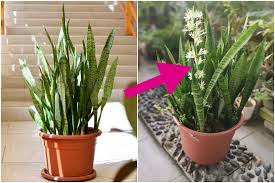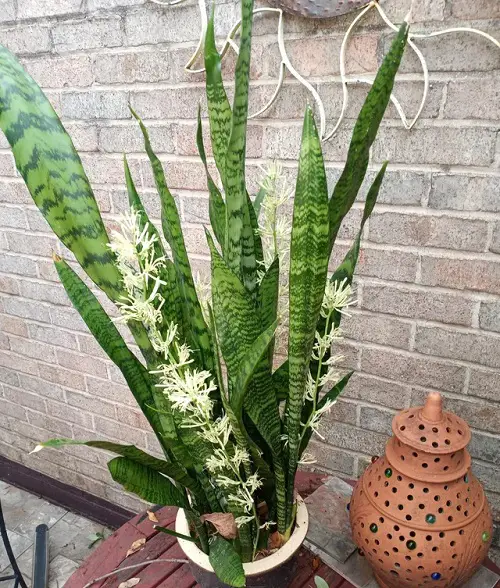By Jessica Jacobs, Contributing Writer
Snake plants, also known as mother-in-law’s tongue or Sansevieria, are prized for their striking, sword-like leaves and incredible resilience. While they’re famously low-maintenance, coaxing these plants into blooming can feel like an elusive goal. Why are flowers so rare on snake plants, especially indoors?
Why Snake Plants Rarely Bloom
Snake plants seldom flower indoors due to their natural growth habits and environmental needs:
- Long Blooming Cycle: These plants prioritize foliage over flowers, requiring optimal conditions and time to store sufficient energy for flowering.
- Environmental Triggers: In their native habitats, specific light and temperature shifts trigger blooms—conditions that are hard to replicate indoors.
- Domestication: Many varieties have been cultivated for lush foliage, often at the expense of flowering.
Despite these challenges, you can encourage blooms with a little patience and the right care. Here’s how:
1. Light: Bright and Indirect
Snake plants thrive in bright, indirect light. While they tolerate low-light conditions, brighter light can encourage blooms. Avoid prolonged direct sunlight, which can scorch the leaves.
2. Watering: Less Is More
Overwatering is a common pitfall for snake plant owners. These drought-tolerant plants prefer their soil to dry out completely between waterings. During the winter, reduce watering even further, as growth slows.

3. Well-Draining Soil
Use a potting mix designed for succulents or cacti to ensure proper drainage. This prevents water from pooling around the roots, reducing the risk of rot.
4. Avoid Root Crowding
If your plant becomes root-bound, it might focus on growing leaves rather than flowers. Check for roots circling the pot, and if necessary, repot into a slightly larger container to give it room to thrive.
5. Maintain Optimal Temperatures
Snake plants prefer warm conditions, especially during the growing season. Avoid cold drafts or sudden temperature changes, as these can stress the plant. Average indoor humidity levels are typically sufficient.
6. Fertilize Sparingly
A little fertilizer goes a long way. Use a diluted, balanced houseplant fertilizer every 4–6 weeks during spring and summer. Avoid over-fertilizing, which can discourage blooming. Skip feeding during fall and winter.
7. Mimic Natural Changes
In their native environment, snake plants experience seasonal light and temperature variations. To simulate these conditions indoors, consider moving your plant to a slightly darker location for a short period.
8. Patience Is Key
Snake plants are not frequent bloomers, and it may take years for flowers to appear. Focus on maintaining healthy, vibrant foliage, and let blooms be a delightful bonus.
9. Handle with Care During Flowering
If a flower spike begins to develop, minimize disturbances. Avoid moving the plant, as this can cause stress and hinder flower growth.
While encouraging your snake plant to bloom takes effort, the process can deepen your appreciation for this resilient and versatile plant. Whether or not it flowers, your snake plant’s striking appearance and air-purifying qualities make it a worthwhile addition to any home.
This version provides detailed, actionable advice while maintaining an engaging tone and clarity.
